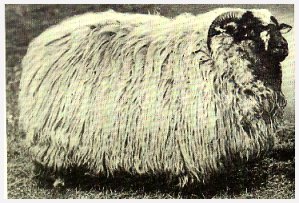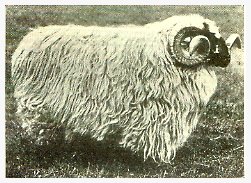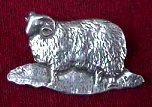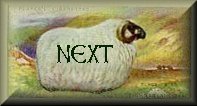HOME | home
Scottish Blackface | Scottish Blackface II | Scottish Blackface III | Scottish Blackface IV | Scottish Blackface VI | Scottish Blackface VII | Scottish Blackface V | Scottish Blackface VIII | Blackface IX | Blackface X | Scottish Blackface Breeders Guild | Blackface Guild 2 | Sheep Shearing | Photo Essay of Blackface | Piebald or Jacob Sheep | Soay Sheep | The Shepherds Bothy
Scottish Blackface VI
BREEDS of LIVESTOCK in AMERICA
By Henry W. Vaughan
Columbus, Ohio
1931

fig. 250.—Black-faced Highland ewe.
Page 485-460
THE BLACK-FACED HIGHLAND
There has been much speculation as to the origin of this hardy and picturesque mutton breed, and a number of theories as to the origin have been advanced, but the best that can be said is that the breed has long inhabited the highland country of Scotland, and to a lesser extent
some of the more mountainous country of northern England, where it is well established and to which it is exceptionally well adapated. TheseSheep afford a striking instance of a breed thoroughly adapted to an environment. They thrive in the roughest kind of country, feed to
some extent on heather, and withstand severe storms and much exposure. No other breed is known which can compete with it under these conditions; it has successfully resisted all attempts of other breeds to invade its territory. It has been exported to several countries, but has
never gained popularity outside of Scotland and northern England. A small importation of Black-faced Highland sheep was made to New York in 1861, and another to Illinois in 1867, followed more recently by a few importations to eastern states. An American Black-faced Highland Sheep Association was formed in New York City in 1907. The breed has never been of more than strictly minor importance in the United States.
|

Type. — This is a small breed, rams and ewes in breeding condition weighingabout 150 and 125 pounds, respectively. The shoulders are fine and the back is rather broad. The tail is naturally short and often they are not docked. Both sexes are horned, those of the ram being large and becoming spiral with age; those of the ewe small, flattened, and curved backward and downward, but not spiral. The face is thick and broad, and is of a mottled black and white color, preferably with black pre-dominating and with the colors distinct, not blurred. The legs are ofthe same color. They are wooled on the forehead and about the lowerjaw. The fleece is of a peculiar nature; there is a covering of woolnext to the body through which grow long hairy fibers or kemp, ex-tending far beyond the wool and giving a coarse, shaggy appearance. The hairy portion of the fleece is quite long, often nearly reaching theground at shearing time, but the fleece is not heavy, the usual weight,according to Wallace, being 3 1/2 to 4 1/2 pounds for ewes, and about 7pounds for wethers two and three years old. Because of its hair the fleece grades as carpet wool in this country and sells at a considerably lower price than wool of the combing and clothing classes. These sheep are wild and active, and are exceptionally hardy and vigorous. In Scotland, Black-faced Highland mutton is famous for its quality. Concerning the adaptability of the breed in the United States, Shaw and Heller state :
"The breed, would probably succeed in some of the mountainous parts of this country and also in Alaska, as they thrive excellently upon coarse pasture, but upon the more fertile, arable districts they are out of place and will not yield returns comparable to those of the breeds adapted to the latter conditions. They are a very picturesque breed and are suitable for keeping in parks, and have been used for. this purpose to a certain extent."
|
copyright 2002 , Jim & Beth Boyle, All Rights Reserved
No part of this website may be used for any purpose ( including using images )
without written consent from The Rams Horn


